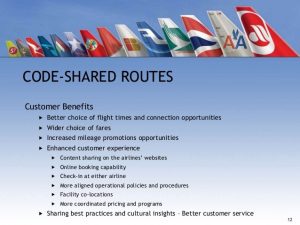In 1980s frequent flyer schemes were designed to ensure customer loyalty. Many airlines have frequent-flyer programs designed to encourage airline customers to get enrolled in the program to accumulate points which are also called miles, kilometers or segments. Frequent Fliers Points earned under Frequent Flyer Program (FFPs) may be based on the class of fare, distance flown on that airline or its partners, or the amount paid.
There are other ways to earn points. For example, in recent years , more points have been earned by using co-branded credit and debit cards than by air travel. Airline-branded credit cards award frequent flyer miles that are only good for travel on that airline. For example, consumers earn points on American Express Credit Cards when they use them for buoying tickets of Air India or Jet Airways those can be redeemed for flights. Generally, credit card miles give you a lot more flexibility when you go to redeem them but tend to have a fixed value-per-mile. With frequent-flyer miles you are subject to limitations like individual airlines and black-out dates (dates when travel rewards and other special discounts/promotions are not available) but you may be able to redeem the same number of miles for a more valuable reward, like an international business class ticket.
, more points have been earned by using co-branded credit and debit cards than by air travel. Airline-branded credit cards award frequent flyer miles that are only good for travel on that airline. For example, consumers earn points on American Express Credit Cards when they use them for buoying tickets of Air India or Jet Airways those can be redeemed for flights. Generally, credit card miles give you a lot more flexibility when you go to redeem them but tend to have a fixed value-per-mile. With frequent-flyer miles you are subject to limitations like individual airlines and black-out dates (dates when travel rewards and other special discounts/promotions are not available) but you may be able to redeem the same number of miles for a more valuable reward, like an international business class ticket.
Another way to earn points is spending money at associated retail outlets, car hire companies, hotels, or other associated businesses. Points can be redeemed for air travel, other goods or services, or for increased benefits, such as travel class upgrades, airport lounge access, fast track access, or priority bookings. In short, Frequent-flyer programs can be seen as a virtual currency, one with unidirectional flow of money to purchase points, but no exchange back into money.
Since 1979-80, frequent-flyer programs have grown a lot. As of January 2017, a total of Blackout 30 trillion frequent-flyer points had been accumulated by people worldwide, which corresponds to a total value of 182 billion US dollars.
Tom Stuker is the world’s number one frequent flier having logged over 18 million miles with United Airlines. In 2017, Tom Stuker achieved a major milestone in United Airlines when he reached over 18 million total miles – all on United Airlines flights. And, that’s not 18 million redeemable miles; that’s 18 million flown miles. He is jokingly called as “man with butt in seat” man. How does he end up flying 18 million miles? Stuker is an auto-industry sales and management consultant based in New Jersey, and his work takes him to those many individual car dealerships around the world. He’s flown to Hawaii over 100 times and to Australia over 300 times. After flying so many miles on United, Stuker is likely the world’s utmost authority when it comes to the airline’s planes and seats.
The primary method of obtaining points in a frequent-flyer program until recent years was to fly with the associated airline. Most systems reward travellers with a specific number of points based on the distance travelled such as 1 point per mile flown, although systems vary. Many discount airlines, rather than awarding points per mile, award points for flight segments in lieu of distance or the amount paid. For example, a number of airlines in Europe offer a fixed number of points for domestic or intra-European flights regardless of the distance; these are varied according to class of travel. Lately, with the introduction of airline alliance and code-share flights, frequent-flyer programs are often extended to allow benefits to be used across partner airlines.
The facts about all these loyalty programs are that airlines make a lot of money from frequent flyer programs. It has to do with neither flying nor flyer loyalty, but the direct sale of frequent flyer miles, both to travellers and to the private companies that manage and partner with their frequent flyer programs.
Why FFP is called airlines’ secret weapon? Many frequent flyers rarely or never redeem their miles, either because they don’t have enough for the award they want, or because they simply horde them. Combine this with the aforementioned customer loyalty and the greater residual earnings from revenue-based mileage accrual. What do accruals mean? When transactions are recorded in the books of accounts as they occur even if the payment for that particular product or service has not been received or made, it is known as accrual based accounting. This method is more appropriate in assessing the health of the organisation in financial terms.
Some travellers make a point of flying busy routes on busy days, then voluntarily take later flights and include frequent flyer miles as part of their ransom for freeing up a seat. Others, on the other hand, find loopholes in airline policies, such as buying tickets on airline partners of the main program airline, on whose flights the revenue earning mechanism is usually waived.
It was Qantas to think of a fantastic business model with the free miles a decade back. The airline now has more than 200 partners: insurers, supermarkets, hotels, car-hire operations, banks and other financial institutions that buy its points and use them to lure customers. It has been highly lucrative for the airline; it adds more than $400 million per annum to Qantas’ profit margin. There are many airlines who copied Qantas model.
You fly and you collect points on the basis of miles flown and got one or few tickets free; it makes sense to keep flying with that same airline.
What is particularly attractive about this business for the airlines is that they receive real cash from their partners, but the points are not usually redeemed straight away. The airlines’ cash flow gets a boost because of added revenue stream for a very little cost stream. FFPs are a type of currency for both consumer and the airline. Airlines determine the value of the points by deciding how many to issue, how many points are needed to purchase an upgrade flight and what additional fees or charges the customer must pay. This gives the airline a huge amount of power to control its cash flow. Technically, the rewards programs “buy” seats and upgrades from the domestic and international divisions of the company. But it is the airline that determines how many and which seats are available, which means the marginal costs are low.
The fact is passengers are charged extra fees and charges in addition to the points when buying seats. These include taxes and fees that are third party costs, such as airport charges, but the airline also adds a ‘carrier charge’, which is determined and reflected as per market conditions and varying demand. Airlines therefore wait for the points to expire.
Three sources of cash inflows for FFP consist of (a) gross margin on points redeemed, (b) working capital benefits, and (c) the revenue from the breakage. The gross margin on points redeemed is the spread between the cost of points and the price for which they are sold to commercial partners; the working capital benefits come from interest on positive float stemming from the received cash from the sale of points; and the breakage is the expiration of unused points (which usually takes place 6 to 36 months after issue) which results in no reward on these points and no associated costs.
Other benefits for the parent airline are: 1) FFP is crucial in order to drive customer behaviors on an airlines’ market globally impacted by the price competition from the Gulf and low-cost airlines. 2) Airlines can derive additional revenue from the monetization of the data mining needed for running the FFP business. 3) The FFP helps reduce the airline’s earnings volatility (driven by oil and currency fluctuations, strong exposure to economic downturns, etc.).
This is how more than the consumer the airlines make profits out of FFP.














































